Final Project: Essay
Sense Peeling
First, I would like to introduce the project statement of purpose. The project was inspired by ChenLe while she was using the mouthwash with her roommate. She has found that when the two users have mouthwashes in their mouths, it is hard for them to communicate with each other using languages – the syllables no longer exist, and the tone gets blur; the two users will be separated into two spaces and each will be given a word and they are allowed to communicate with each other by drawing without using any language. Based on her proposal, we have discussed and taken one step further. My inspiration is that when I am wearing my blinder and trying to get some sleep, I hear my roommate making some noises. But when I take off my blinders, I have found that what he is doing is completely different from what I have been thinking with my blinders on. Based on this observation, we want to add some steps after the first round’s drawing. The two users will take turns to wear a mask and then communicate with each other through the drawing. So The purpose of this artifact is to provide a special experience when language no longer exists, different actions the users decide to take may lead to different results, it can also be considered as an experiment.
Secondly, I will make out a detailed plan for the project. Here are some sketches explaining how the project will work in detail, and I think they are helpful for others to understand our project. Also, these sketches will illustrate what our project aims to do.
***All the word “mouse” in the sketch is a spelling mistake, it should be “mouth”
***There is one thing missed in the sketch, which is the button C on Arduino, which serves as the break function of the brush, otherwise, user A can only draw a unicursal.
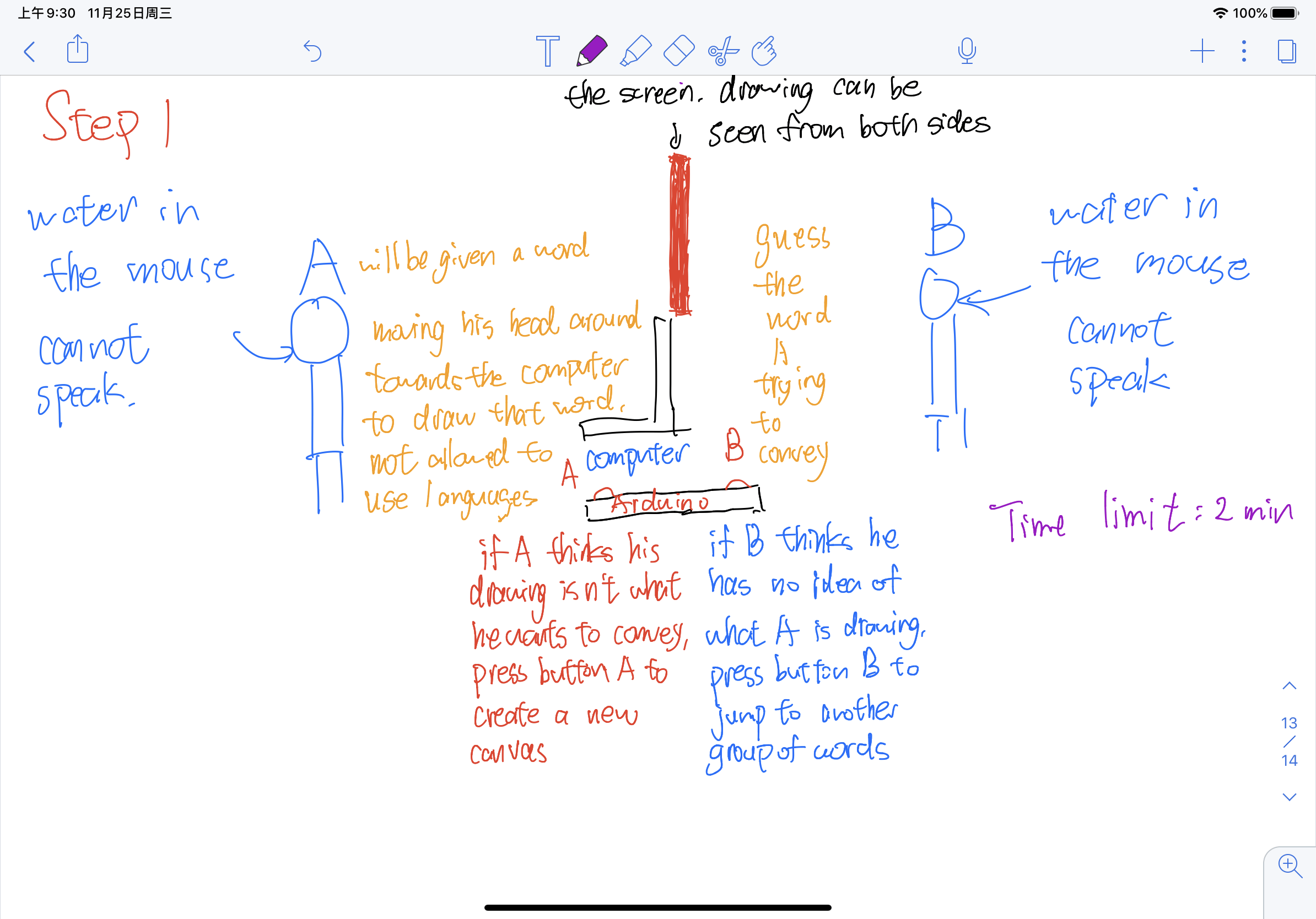
In the first step, two players will stand on two sides, with water in their mouth, which aims at eliminating the possibility of communicating by using languages. And then the camera will detect player A’s face and calculate the center of it. He’ll use that center to create the drawing.
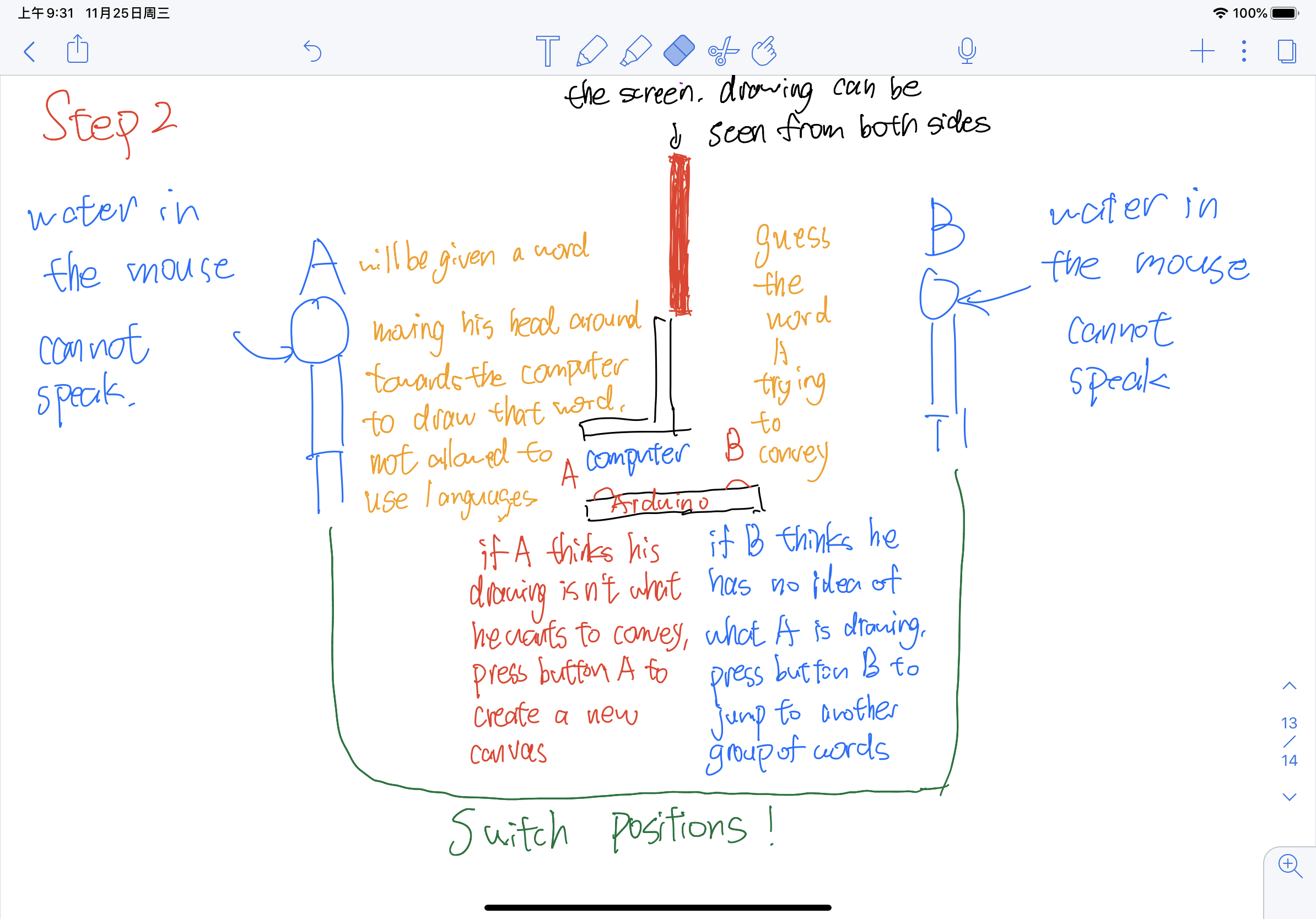
The second step is two users switch their positions. The one who previously does the drawing job now does the guessing job.
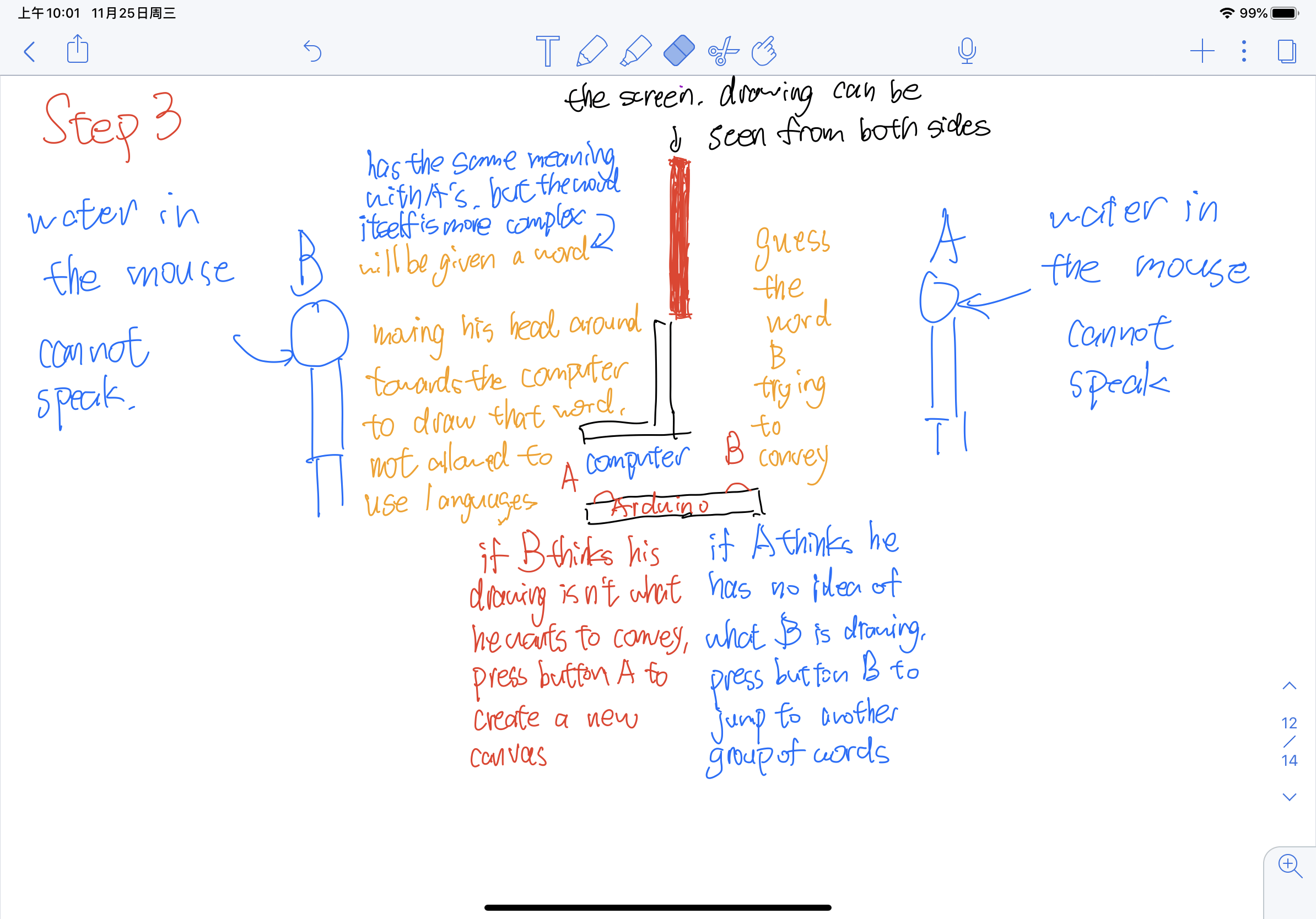
The third step is that User B will be given a word with a similar meaning to A’s, but it’s more complex in the format. And all other variables stay the same. The time limit is still 2 minutes.
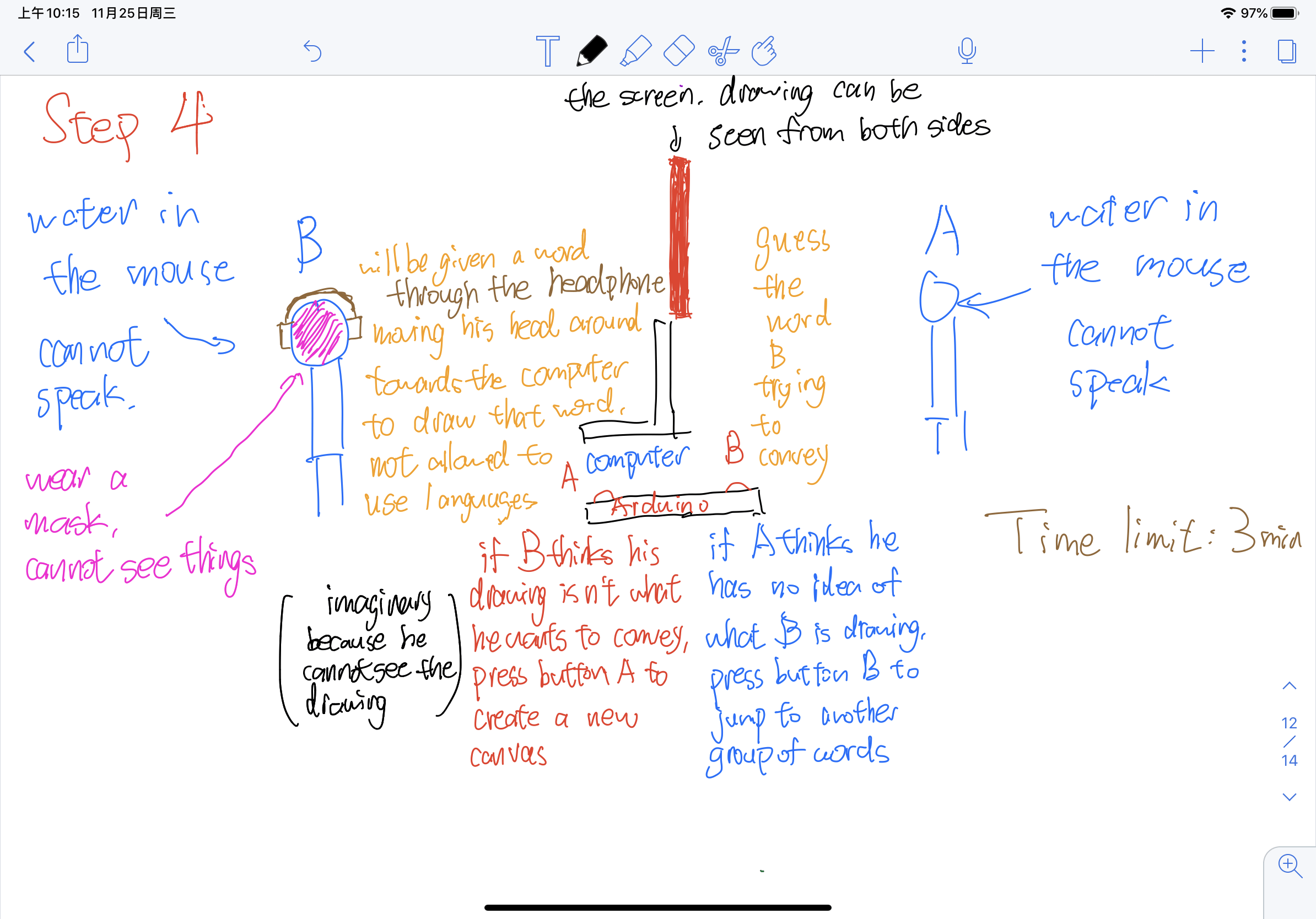
The fourth step is B wearing a mask covering his face and then do the same drawing process. The words will be given in the headphone. Because it’s more difficult, the time limit will be extended to 3 minutes. The Arduino will be put right in his hands so that he won’t feeling troublesome when he wants to erase something. The biggest challenge in this step is the drawer cannot see his drawing, thus the erasing process is also based on his imaginary ability.
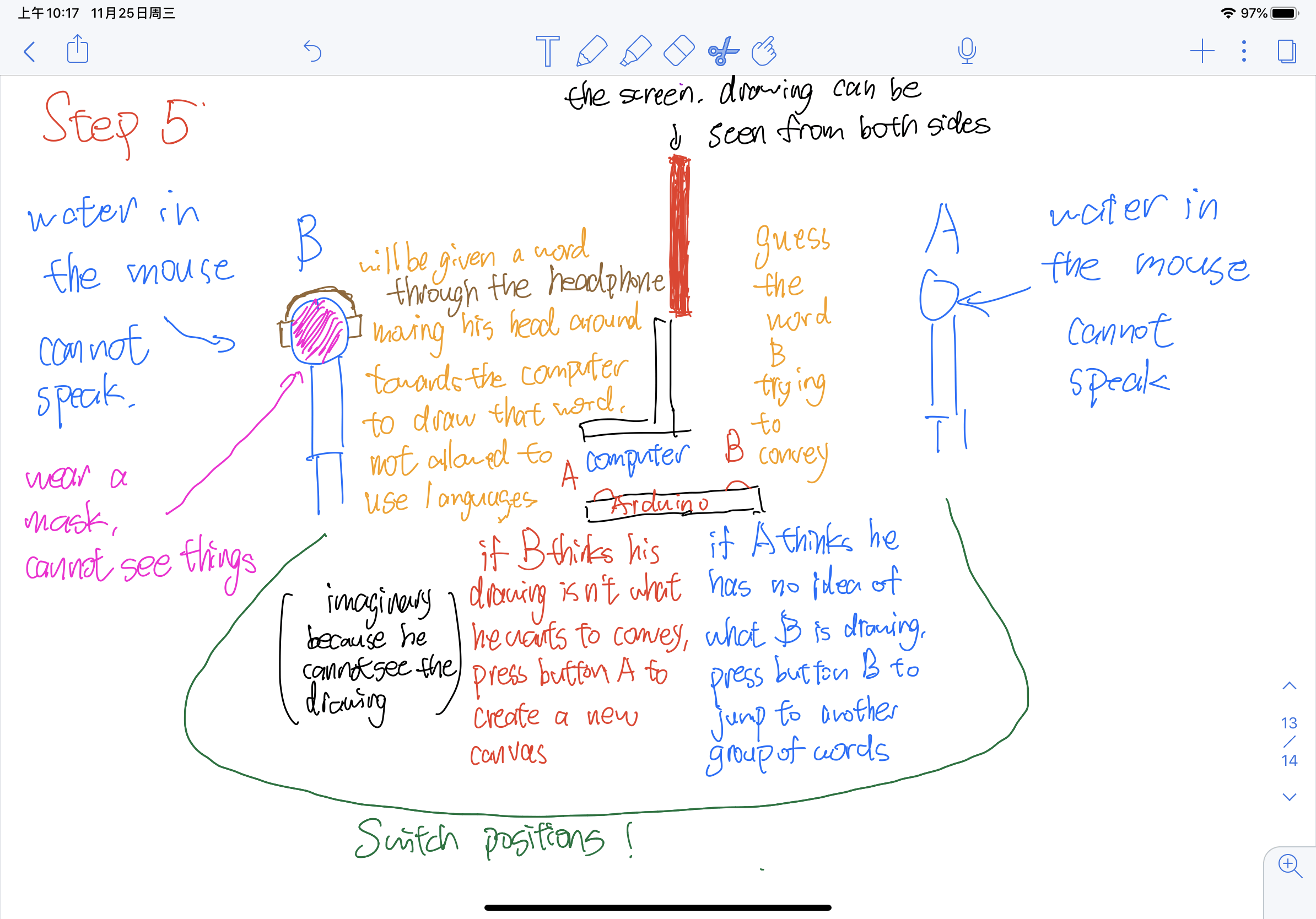
The fifth step is that two players will switch their positions and get ready for the last round of guessing.
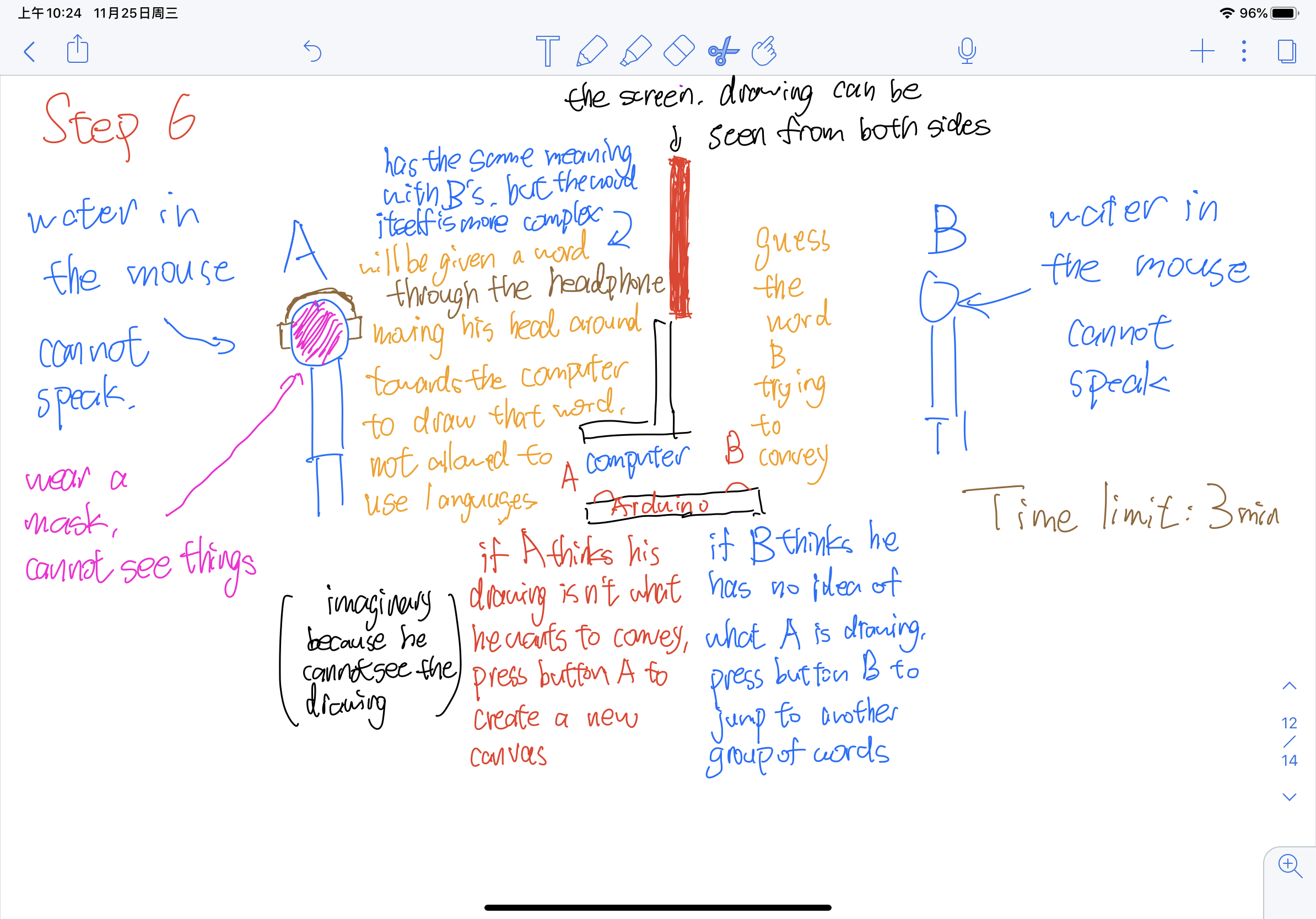
The last step is User A wearing the mask and then doing the drawing. Similarly, the words she receives from the headphone will be more complex but has a similar meaning to the previous one. Based on the results of four rounds of guessing, there will be some rewards, but we haven’t decided on the content of the gift yet. Also, the group with the most correct guessing will be rewarded with something special.
Above are the introduction part of the project and how the process of interacting will look like. Next, I will talk about the project’s plan. In the first one or two days, we plan to figure out the Arduino part. It is not very difficult, there are only 3 inputs, each with a specific function in the process. Hopefully, we can also build the processing program which delivers the word in random order. Then, we plan to use one to two days finishing the recording of all the words combination and plug them into the original program which is used to deliver words. The last step is the most complex one, we are going to figure out how the OpenCV works on the processing. This one is considered another library which we haven’t covered in the class yet. Based on the difficulty, we plan to spend about one week on this step. This step also includes the part calculating the center of the face and drawing program. If there is still time left, we would like to makes the whole project look more user-friendly with a more attractive appeal.
Last but not least, I am going to discuss the context and significance. As a team, I have also done research on what ChenLe has offered me, and this project’s inspiration comes from Unstable Empathy by Mattia Casalegno and Enzo Varriale. In this project, “it’s not the interaction between human and machine, but an interaction between humans; the project only serve as a communication tool in between, which means that it’s not the main subject of the interaction/communication, but still provides an important function which links the users together”(ChenLe) For me, I think this project has already gone beyond my old definition of interaction. According to what Ernest Edmonds has written in “Art, Interaction and Engagement”, the interactive projects’ feature is defined as “All of the conditions of the dynamic passive category apply with the added factor that the human ‘viewer’ has an active role in influencing the changes in the art object.”(3) My previous definition of interaction is based on this. As a result, I focus more on the interaction between a human with artwork rather than the artwork plays as a middleman of a human interacting with another human. In this project, the interaction between a human and another actually involves the interaction with the artwork. They need to move their heads towards it so that they could communicate with others. The artwork here plays the role of a middleman, serving for a higher level of interaction. The most unique thing is what I have mentioned above, is its ability to let people’s interaction with the artwork serve as a middleman for man-to-man communication. Also, this whole experience of communicating without using some of the most familiar sense is brand-new for us. I think our project is original, which means that we are re-creating the existing artwork. The target audience is very large, including almost everyone. But I don’t want the disabled to try this project easily. The point here is that I don’t want to let them feel humiliated by this project. We are not trying to imitating them or laughing at him. The idea here is that we want to observe and let the users experience the process of communicating without relying on the most familiar sense. To some extent, you can also define our project as by experiencing these things, people will be more respectful to the disabled because they have tried in person how big the effort they need to make to be able to communicate with others not relying on the sense of seeing and speaking. But if the disabled can fully understand our intention, we are more than welcome to invite them to join us. What I am saying above is to try to eliminate the unnecessary misunderstandings, it has nothing to do with the discrimination. Hopefully, when people have experienced our project, they will pay more attention to those who are born deprived of these abilities. This might be the direction of the project is suggesting. For the possible subsequent projects, the target audience might the reverse one. By letting more people aware of this problem enables us to generate more great designs and build more concrete machines that will help these disabled, to give them a more convenient and better life. Also, this project shares some similarity with the experiment, we want to observe different groups of people’s reaction when they are deprived of their most familiar abilities. Maybe this data can be fed to develop more advanced robots.

